15+ Sample Audit Corrective Action Plan
-
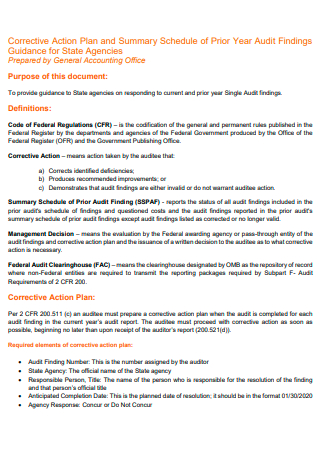
Audit Findings Corrective Action Plan
download now -
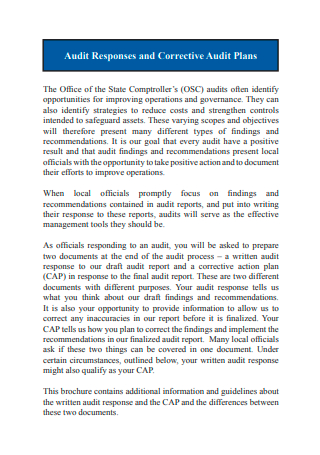
Audit Responses and Corrective Audit Plan
download now -
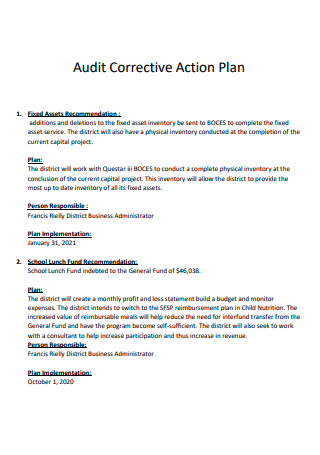
Audit Corrective Action Plan Example
download now -
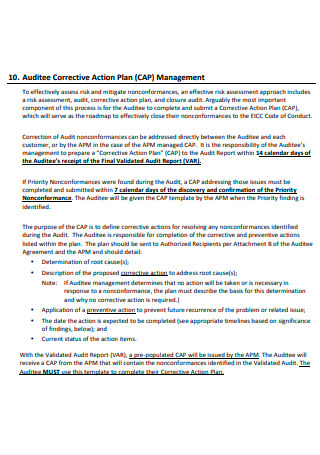
Auditee Corrective Action Plan Management
download now -
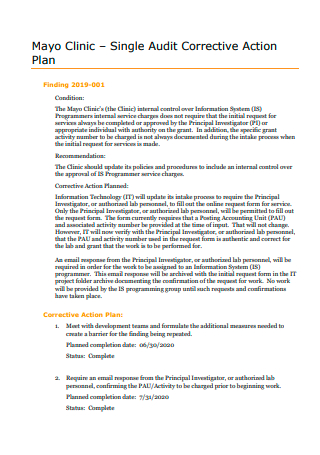
Single Audit Corrective Action Plan
download now -
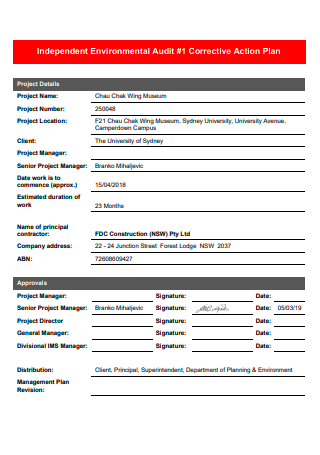
Independent Environmental Audit Corrective Action Plan
download now -
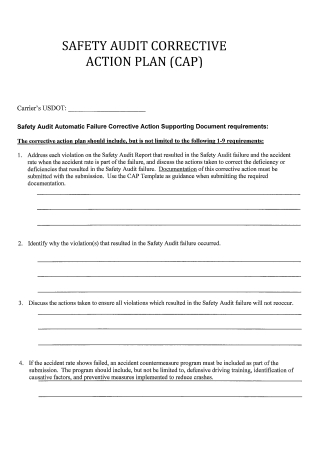
Safety Audit Corrective Action Plan
download now -
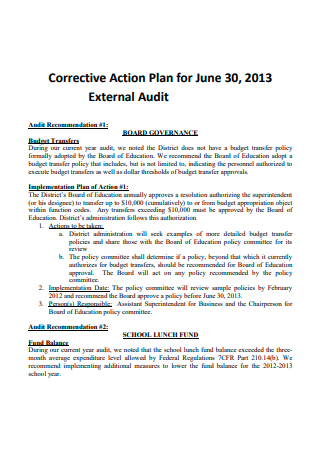
External Audit Corrective Action Plan
download now -
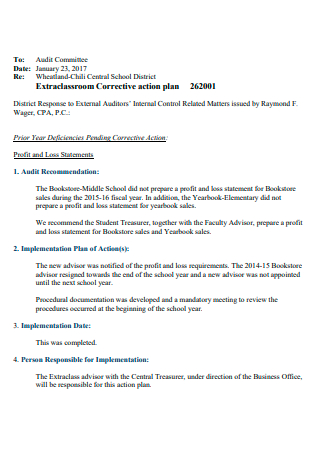
Audit Committee Extra Classroom Corrective Action Plan
download now -
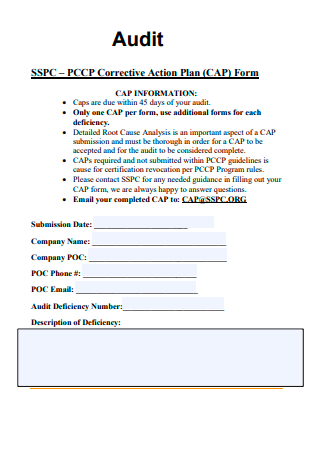
Audit Corrective Action Plan Form
download now -
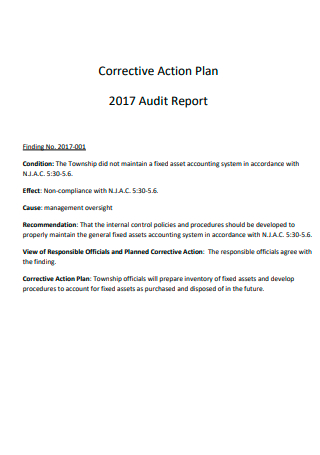
Audit Report Corrective Action Plan
download now -
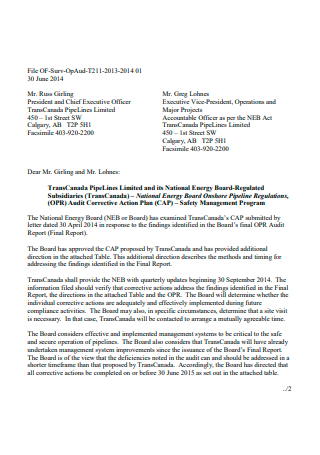
Simple Audit Corrective Action Plan
download now -
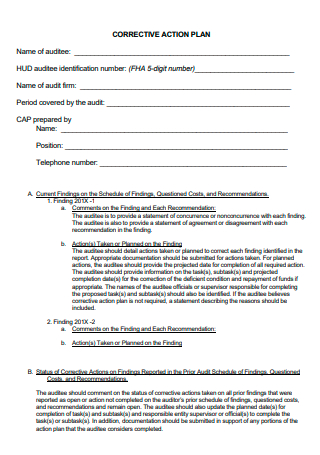
Audit Corrective Action Plan Format
download now -
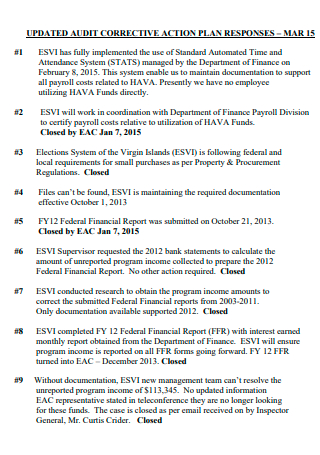
Updated Audit Corrective Action Plan
download now -
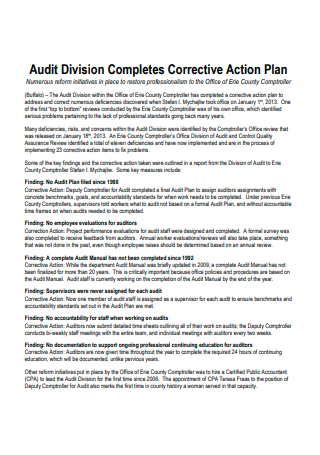
Audit Division Corrective Action Plan
download now -
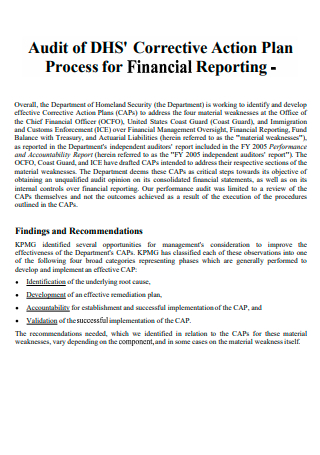
Audit Corrective Action Plan Process
download now
FREE Audit Corrective Action Plan s to Download
15+ Sample Audit Corrective Action Plan
What Is an Audit Corrective Action Plan?
Why Are Audit Corrective Action Plans Important?
The Main Elements of an Audit Corrective Action Plan
How to Make an Audit Corrective Action Plan
FAQs
How many days should the root causes of audit nonconformances be identified in a corrective action plan?
What is the purpose of an audit corrective action plan?
What are some tips to resolve findings with a corrective action plan?
What Is an Audit Corrective Action Plan?
An audit corrective action plan is a detailed document that highlights the targeted outcomes to resolve undesirable actions identified in an audit. So when audit findings are not good such as having loads of risks and nonconformances, the audit corrective action plan aims to lessen these issues by not only identifying the problem but also resolving it. And just like any action plan, this document is reliable to follow if you want improvements in the next operations to come, specifically in gathering desirable audit outcomes next time.
According to the Responsible Business Alliance (RBA), a corrective action plan must identify the root causes of an audit’s nonconformances within seven calendar days.
Why Are Audit Corrective Action Plans Important?
Audit corrective action plans are more than just for the sake of documentation purposes. In fact, you are guided by the plan on how to implement the best corrective actions from start to finish. And here are some of the top reasons that prove just how important an audit correction action plan is:
Improves Audit Processes and Methods
Remember that an audit corrective action plan addresses the issue or root cause of nonconformance. But, it does more than just identify the problem because the plan includes an improvement plan. That way, you can go for an efficient and effective audit process. So if you have struggled with previous audits before, allow a corrective action plan to fix your errors so better methods will take over your work.
Streamlines the Next Audit Workflow
Not only will you correct the next audit process but you get to experience a more streamlined audit workflow as well. An audit corrective action plan aims to make auditing easier and more cost effective. Just like a standard audit plan, the audit corrective action plan marks the blueprint of operations on how to deliver an easy yet effective auditing process and result. So if you have any questions about what to do next or you forget how to do a certain step, simply refer to the plan to be guided.
Recognizes Appropriate Solutions to Resolve Issues
Through educational guesses, anyone can think of a solution to resolve audit issues. However, audit corrective action plans are more focused on delivering the most appropriate solution to resolve such problems. That means you can’t just use a random solution as not every solution is meant to be the most appropriate and effective one. With the help of a strategic plan that is outlined in the corrective action plan, you can surely hope for the best results in mitigating audit risks and issues.
Prevents Future Problems
You should know by now that audit corrective action plans are meant to benefit your work’s future. Similar problems can be lessened and prevented in your next auditing process. So rather than allowing poor audit results to take over and experiencing the same issues every audit, your audit’s future is much brighter when its different facets are already improved and rectified. Hence, you can treat an audit corrective action plan as your audit’s official development plan.
Works for Different Applications
You can certainly apply an audit corrective action plan for different applications and purposes. Remember that in any industry, making an audit report is always relevant. Whether you are under finance, marketing, healthcare, or even the food industry, ensuring that the appropriate measures are conducted in the auditing process is essential. So at least audit corrective action plans are not simply limited to a few organizations since they can be used by any business in general.
The Main Elements of an Audit Corrective Action Plan
What makes up a basic audit corrective action plan? A plan can be very detailed that it gets difficult to pinpoint every element in the action plan right away. However, it is expected that audit corrective action plans contain the following essential elements:
How to Make an Audit Corrective Action Plan
There is no doubt that audit corrective action plans help make audit findings strengthen an organization. More so, auditors get to conduct assessments and audits more efficiently with a corrective action plan in the process. And with your knowledge regarding the plan’s definition, importance, and elements, you are equipped enough to create your own audit corrective action plan. Be sure to follow these steps to streamline the process of making the plan:
-
Step 1: Set SMART Goals
The planning process marks the foundation of your audit corrective action plan. So be sure to document everything discussed while planning so you have a reliable draft to use for reference in completing the plan later on. And the key to planning is to incorporate SMART goals towards the corrective actions you plan to achieve. That means you set specific, measurable, attainable, relevant, and time-based goals to reach the desired resolution.
-
Step 2: Download and Customize a Template
Put your ideas into action by using a sample audit corrective action plan template. Simply download any of the customizable templates enlisted above and you can personalize its format and content after. Tons of options are available such as a safety corrective action plan template, employee corrective action plan template, sample corrective action plan response, or simply a sample corrective action plan template. Pick a template you can optimize from over 15+ editable and printable examples now!
-
Step 3: Insert the Audit Corrective Action Plan’s Elements
As you slowly work on your template by filling in the crucial information, be sure to add the basic elements of an audit corrective action plan in your checklist of details to insert. From the title page down to the progress updates, these standard examples make up a solid audit corrective action plan. But, you can also insert more relevant elements or take out unnecessary ones as long as you know what works best for your audit corrective action plan.
-
Step 4: Consider the Plan’s Accuracy, Readability, and Completeness
Observe the audit corrective action plan you made and edited so far. But this time, you observe according to the plan’s accuracy, readability, and overall content. The details must be fact-checked until you are guaranteed a correct and precise audit corrective action plan. Also, mind the details if they are easy to understand or clear enough for reading. Otherwise, you need to edit your words for more readable content. And lastly, check if you have stated everything that needs to be stated in the plan. If some details are still lacking, add them until it is complete.
-
Step 5: Conduct Training
Now that you have produced a stellar audit corrective action plan, it is time to prepare a training plan. Remember that any type of corrective action plan involves various changes that an organization should adjust to. So whoever is involved or expected to perform the enlisted actions there should be fully trained. That way, running the overall plan would run smoothly and accurately. Most importantly, aim for improvement as much as possible.
FAQs
How many days should the root causes of audit nonconformances be identified in a corrective action plan?
Expect around seven calendar days for the corrective action plan to determine the root causes of an audit’s nonconformances.
What is the purpose of an audit corrective action plan?
The main purposes of audit corrective action plans are: (1) to determine the root cause, (2) to describe the proposed corrective action, (3) to apply corrective and preventive action, (4) to set the action’s deadline, and (5) to track the status of every action item.
What are some tips to resolve findings with a corrective action plan?
Here are some ideas that can help you resolve findings with a corrective action plan:
- Identify if a corrective action plan is relevant or not.
- Determine the parties and resources involved.
- Implement the corrective action plan.
- Update the related documentation.
- Conduct a retest on the audit.
From identifying audit nonconformance root causes, recognizing the corrective action process, to applying the appropriate corrective action steps, audit corrective action plans can save lots of businesses and organizations. Remember that whether results are good or bad in an audit, the goal is still for improvement and not to simply criticize. So be sure to demonstrate the necessary corrective action and commit to getting the best results in an audit with a sample audit corrective action plan as your guide. Download a template now!
